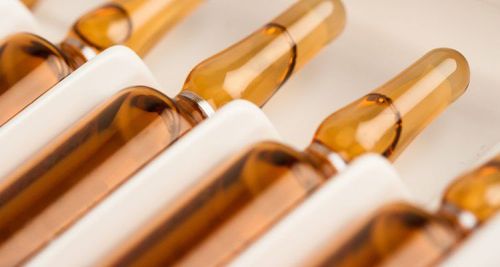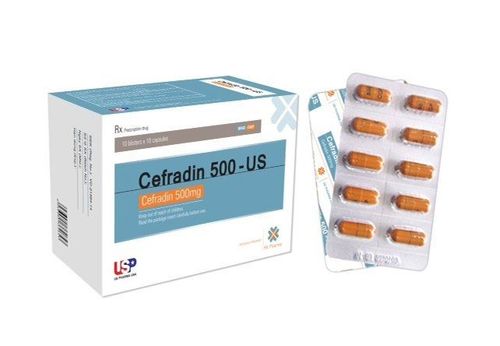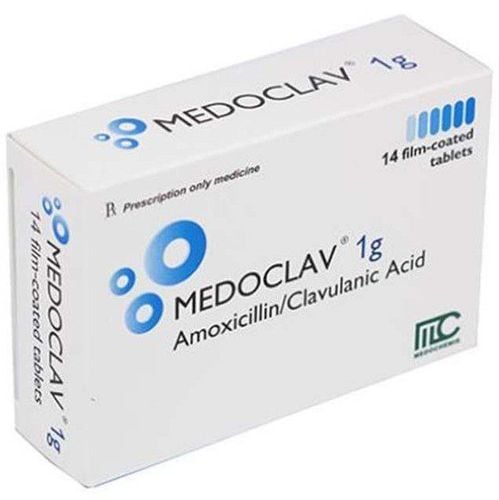This is an automatically translated article.
Cefamandol is one of the medicines used to treat lower respiratory tract infections caused by bacteria. The following article will provide more information about the uses of Cefamandol, how to use it, and what to expect when using Cefamandol.
1. What is Cefamandol?
Powder for injection: White or almost white powder, packed in glass vial, rubber stopper, aluminum outer cap.
Each vial contains
Active ingredient:
Cefamandol 1G: Cefamandol 1 g (as Cefamandol nafat).
Cefamandol 2G: Cefamandol 2g (as Cefamandol nafat).
Cefamandol 1g: The drug is prepared in the form of a powder for injection with a content of 1g
Each vial contains
1.05 g Cefamandol sodium or 1.11 g Cefamandol nafat corresponding to 1 g Cefamandol Excipients just enough Cefamandol 2g : The drug is prepared in the form of powder for injection with a content of 2g
Each vial contains
Cefamandol 2g (in the form of Cefamandol Nafat) Excipients just enough Central Pharmaceutical Joint Stock Company I - Pharbaco is the unit that produces the product. Products.
2. Uses of Cefamandol
Indications:
Cefamandol is indicated in the treatment of serious infections caused by susceptible strains of bacteria such as Klebsiella, Haemophilus influenzae, Streptococcus pneumoniae,... and some infections caused by sensitive bacteria. other colds.:
Lower respiratory tract infections, including pneumonia. Urinary tract infection. Peritonitis . Sepsis. Skin and soft tissue infections. Bone and joint infections. Non-gonorrhea pelvic infection. Prophylaxis during and after surgery.
3. How to use Cefamandol effectively?
How to use
The drug is administered in the form of Cefamandol nafat, the same intramuscular or intravenous dose. The drug is given by deep intramuscular or slow intravenous injection for 3-5 minutes or by continuous infusion or intermittent infusion.
Dosage
Adults: Deep intramuscular injection, or slow intravenous injection (from 3 to 5 minutes) or intermittent or continuous infusion with a dose of 0.5 to 2 g, every 4 - 8 hours, depending on the severity of the disease. or mild.
Children over one month of age: 50 - 100 mg/kg/day in equally divided doses; In severe cases, the maximum dose is 150 mg/kg body weight/day.
To prevent infection during surgery: Intravenous or intramuscular dose 1 - 2 g, 0.5 to 1 hour before surgery, then 1 g or 2 g every 6 hours, for 24 to 48 hours. For prosthetics transplant recipients, continue using Cefamandol for up to 72 hours.
For people with kidney failure, the dose must be reduced. After the first dose of 1 - 2 g, the maintenance doses are as follows:
| Độ thanh thải creatinin (ml/phút) | Liều lượng và cách dùng |
| 80 - 50 | 750 mg - 2 g, 6 giờ/lần. |
| < 50 - 25 | 750 mg - 1,5 g, 8 giờ/lần. |
| < 25 - 10 | 500 mg - 1,25 g, 8 giờ/lần. |
| < 10 - 2 | 500 - 1 g mg, 12 giờ/lần. |
| < 2 | 250 - 750 mg, 12 giờ/lần. |
4. Contraindications of Cefamandol
Hypersensitivity to drug components containing penicillins and cephalosporins.
5. The effects of the drug Cefamando
Rare:
Gastrointestinal symptoms of pseudomembranous colitis may occur during or after antibiotic use Nausea and vomiting Like some penicillins and other cephalosporins, cholestatic jaundice and hepatitis also occur. are some rare or very rare effects eosinophilia, anaphylaxis, rash, urticaria, and fever. Thrombocytopenia in the blood. Neutropenia is reduced, especially with long-term drug therapy. Venous occlusion Increases SGOT, hepatic SPGT, and alkaline phosphatase Decreases renal creatinine clearance Temporarily increases BUN, with an increased frequency of patients over 50 years of age. Intramuscular injection will have injection site reactions. And there are some other possible side effects. You should consult your doctor or pharmacist in case of any symptoms.
6. Precautions when using Cefamandol
There is partial cross-allergy (5 - 10%) between beta-lactam antibiotics including penicillins, cephalosporins, cephamycins and carbapenems. Before initiating treatment with Cefamandol, a thorough investigation of the patient's history of allergy to cephalosporins, penicillins or other drugs should be made. Cephalosporins should be avoided in patients who have had an immediate hypersensitivity (anaphylactic) reaction to penicillin and should be used with caution in patients who have had a delayed reaction (eg, rash, fever, eosinophilia) to penicillins. or other drugs. If an allergic reaction occurs during treatment with a cephalosporin, discontinue the drug and treat the patient appropriately as indicated (eg, administer epinephrine, corticosteroids, maintain adequate ventilation and oxygen). Prolonged use of cephalosporins may lead to overgrowth of non-susceptible organisms, especially Enterobacter, Pseudomonas, Enterococcus or Candida. If superinfection is present, appropriate treatment is required. Cephalosporins should be used with caution in patients with a history of gastrointestinal disease, especially colitis. Since antibiotic-associated pseudomembranous colitis has been reported to occur with cephalosporins, a differential diagnosis should be considered in patients with diarrhea during or after cephalosporin therapy. Precautions before using nalidixic acid:
You should tell your doctor or pharmacist if:
You are pregnant, planning to become pregnant, or are breast-feeding You are taking any prescription or non-prescription medications drugs, herbs, supplements You are allergic to drugs, foods, or other substances If you have Alzheimer's disease, a central nervous system disease, hardening of the arteries in the brain, increased pressure in the brain , liver problems, sun sensitivity, severe kidney problems, or a family history of heart rhythm problems. Pregnancy:
There are not enough tightly controlled studies on the use of Cefamandol in pregnant women; The drug is not known to cross the placenta, the effect on the fetus has not been determined, so this drug should be used during pregnancy only if absolutely necessary.
Lactation:
Cefamandol is excreted in low concentrations in breast milk like other cephalosporins. This drug must be used with caution in nursing mothers.
Overdose and treatment:
High doses can cause convulsions and other signs of central nervous system toxicity. High doses can also cause pseudomembranous colitis. The drug must be stopped and the patient must be treated immediately.
7. Preservation of Cefamandol
Cefamandol powder for injection must be stored at a temperature lower than 40 oC, preferably at a temperature of 15 - 30 oC.
Once dissolved, Cefamandol nafat was partially hydrolyzed to Cefamandol and carbon dioxide was formed in the vial during storage at room temperature.
At concentrations of 2 mg or 20 mg/ml, Cefamandol is physically stable for 24 hours at room temperature or 96 hours at 5 °C in sterile solution for injection. If a frozen solution is reheated to facilitate dissolution, the solution should only be warmed up to 37°C and care should be taken not to re-warm it after it has completely dissolved. Once thawed, Cefamandol nafat must not be frozen again.
Please dial HOTLINE for more information or register for an appointment HERE. Download MyVinmec app to make appointments faster and to manage your bookings easily.













